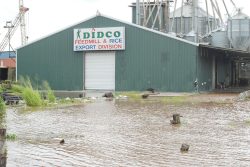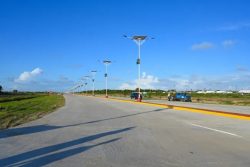Dear Editor,
President Ali recently signed a MoU with the Dominican Republic (DR) to develop a refinery in Berbice. This joint venture should also include Suriname in order to process their crude as well as using their expertise in petroleum refining.
Building a refinery in our region has all the hallmarks of success given that the most conservative estimate for the use of fossil fuel is that it will continue well into the next fifty years.
It means therefore refined products from crude petroleum such as gasoline, ultra low sulphur diesel, aviation jet fuel, bitumen, stock feeds for fertilizers, raw sulphur et al will be a lucrative market for the next five decades and possibly more.
What is the present situation with regards to refining capacity in the Caribbean?
With the exception of the Staatstolie Refinery in Suriname that was modernized in 1995 to ISO 9001 standards with nearly zero emissions, all the remaining refineries in the Caribbean were built during the first or second world wars. Most are closed due to the cost for them to lower their emission pollution.
Petrotrin and Aruba Refineries are now used as a storage terminals, Isla built by Shell in Curacao in 1917 is facing serious environmental issues with high levels of carbon pollution. The Limetree Refinery in St Croix has again filed for bankruptcy and is facing lawsuits for polluting the drinking water as well causing skin and lung disease to the inhabitants of the island due to its poor emission control.
Much cannot be said of the refineries in Venezuela and Cuba given the lack of data but making a logical deduction from the state of their respective economies, you can safely conclude they would not be in any state-of-the-art condition.
To sum things up, in terms of fuel supply and security in the Caribbean region, our supply chain is pitifully inadequate with high carbon emissions.
Technology advances in refining plant machinery over the last two decades have vastly improved the refining process with a net result of almost zero harmful emissions. Instructive to note is that Suriname’s Staatstolie Refinery is built right on the docks of its capital city Para-maribo and its water treatment and gas emissions are close to zero, so much so that the treated water is safe to discharge in the river.
A 200,000 barrels refinery joint venture with DR and Suriname with close to zero carbon emissions in proximity to the proposed deep water harbour will pay handsome dividends. Both us and Suriname are producing a similar type of light sweet crude which will result in less harmful carbon emissions during refining and with the most modern treatment plant, the emissions gases will almost be harmless.
Suriname has personnel that has gained a lot of expertise in refinery construction and operation which they can bring to the venture.
The time is opportune for us as a nation to consume what we produce given the abundance of our crude oil discoveries by moving to refine the product.
Viewed from all angles a joint venture 200, 000 barrels refinery among Guyana, Dominican Republic and Suriname should be very viable.
Yours sincerely,
Reggie Bhagwandin









